[ad_1]
Information pillars, also regarded as pillar internet pages, are large-stage introductions to a subject matter. They link to far more comprehensive methods about each and every subtopic to kind a material hub.
Right here are a couple added benefits of using a written content hub strategy:
- Superior organization – Pillar pages essentially act as a topical hub and permit you to investigate a subject in element.
- More engagement – It is simple for audience to obtain associated articles and take in a lot more.
- A lot more one-way links – Persons often url to articles pillars, as they are a great starting place for all those wanting to study about a topic.
In this guidebook, you will master how to build a material pillar for your internet site.
How to generate information pillars
Stick to the steps below to make written content pillars for your website.
1. Discover the principal subject to make a content pillar around
Seize a seat, a pen and paper (or notebook), then brainstorm concepts for content material pillars. If you’re common with the specialized niche, numerous subjects should really arrive to mind.
For illustration, I’ve been breakdancing for the past 10 a long time, and I can feel of a great deal of topics for pillar internet pages (e.g., styles of energy moves, must-know footwork techniques, and more).
Alternatively, you can also use Ahrefs’ Key phrases Explorer to obtain thoughts. Just enter a broad term linked to your area of interest and go to the Matching conditions report.
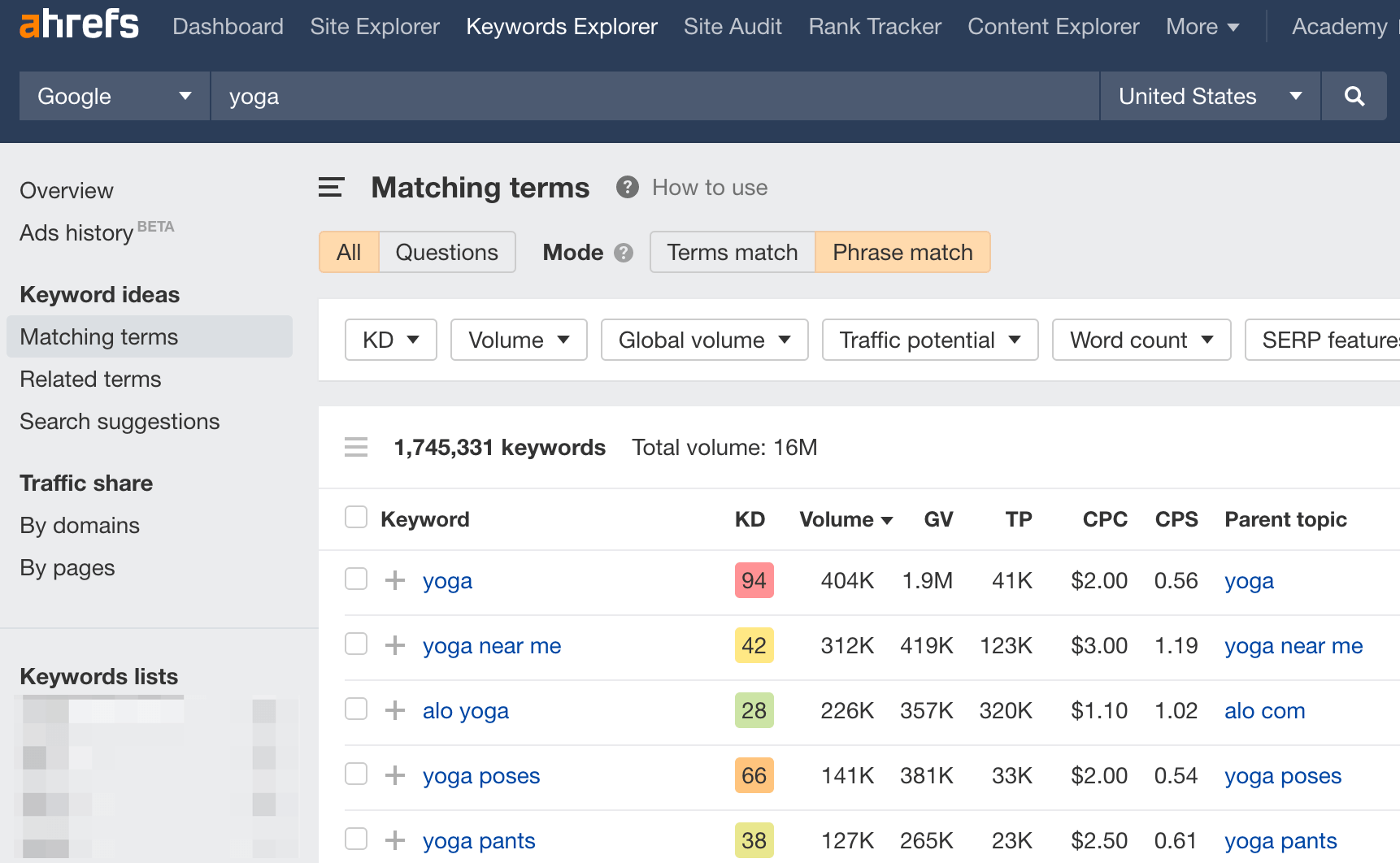
Nonetheless, not each time period listed here will be a suitable topic. What’d you want are matters that:
- Have informational intent – Persons are searching for details, not to get. You can verify this by Googling the subject. If most of the results are web site posts, articles or blog posts, or other hubs, the matter most likely has informational intent.
- Have search website traffic opportunity – Glimpse at the Website traffic Opportunity (TP) column beside just about every search phrase to see its research targeted traffic opportunity.
- Are wide sufficient – The matter shouldn’t be so slender that there are not any subtopics to talk about. And it should not be so wide that your pillar page is 50,000 words very long both. As a typical rule of thumb, seem for subject areas with among 5 and 20 subtopics.
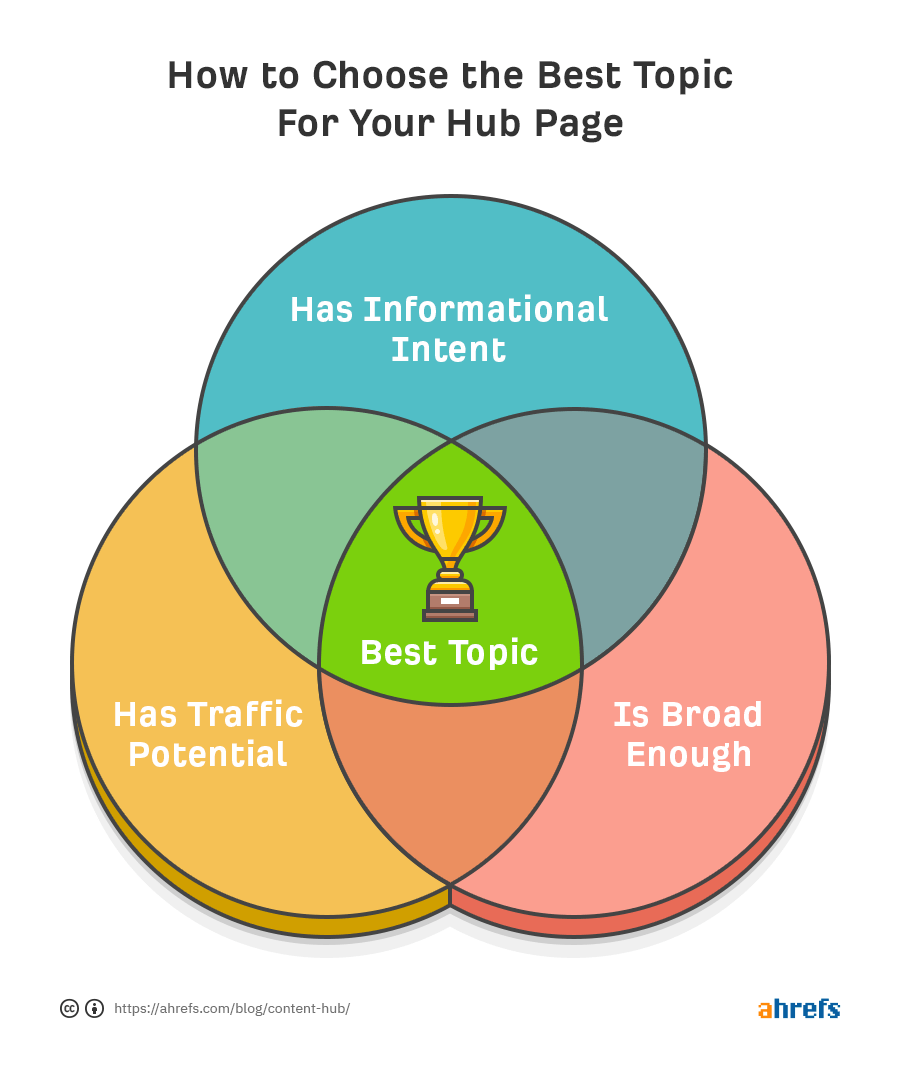
For illustration, let’s review the topic “yoga poses” towards the criteria:
- Has informational intent – Just about all of the effects are blog posts.
- Has lookup targeted traffic possible – The topic’s TP is 33,000 (in the U.S. alone).
- Is wide plenty of – There are likely hundreds of yoga poses to cover. But if we slim down to the “best” kinds for beginners, there should be a pleasant selection for a pillar website page.

If you’re a yoga internet site, this could be a great subject matter for a content pillar.
2. Figure out what you have to have to protect in your articles pillar
The important in this article is to pick out subtopics that are hugely related to the main topic.
Listed here are a couple of ways to find them:
A. From your skills
If you are an professional or common with the market, then you probably have an idea of what you need to go over. For example, if you are a yoga instructor, you possible already know the various kinds of yoga poses that newcomers ought to master initial.
B. Examine Wikipedia
If your subject exists on Wikipedia, it’s a wonderful way to locate subtopics given that everything is by now structured adequately.
For illustration, Wikipedia has a website page named “Checklist of asanas,” where unique yoga poses are organized in a table:
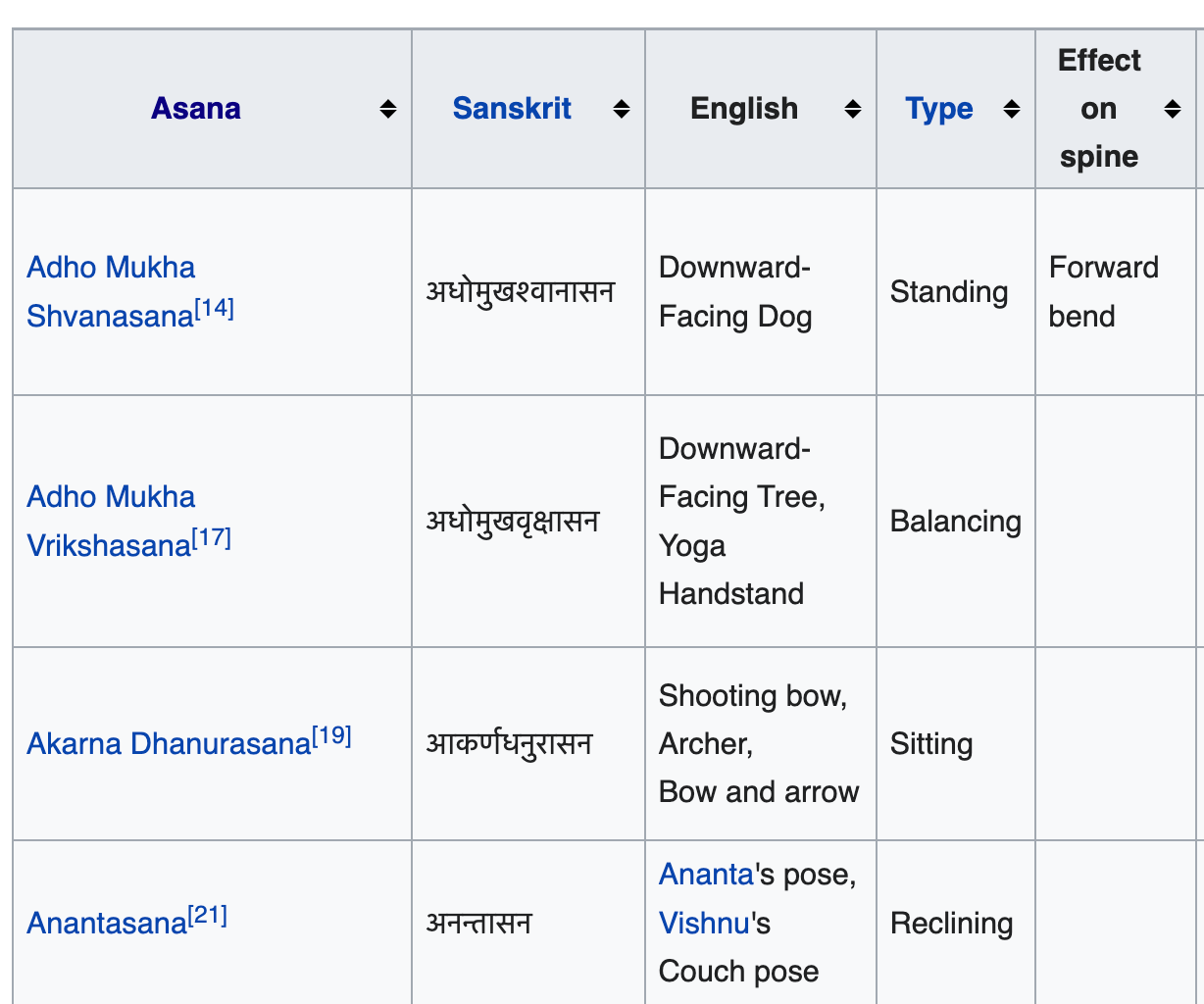
C. Look at online programs
On line programs exist for practically any subject, and they’re usually structured in a sensible fashion. Hence, they are also fantastic sites to glimpse for pertinent subtopics.
For example, this course on Udemy addresses the crucial poses for yoga:
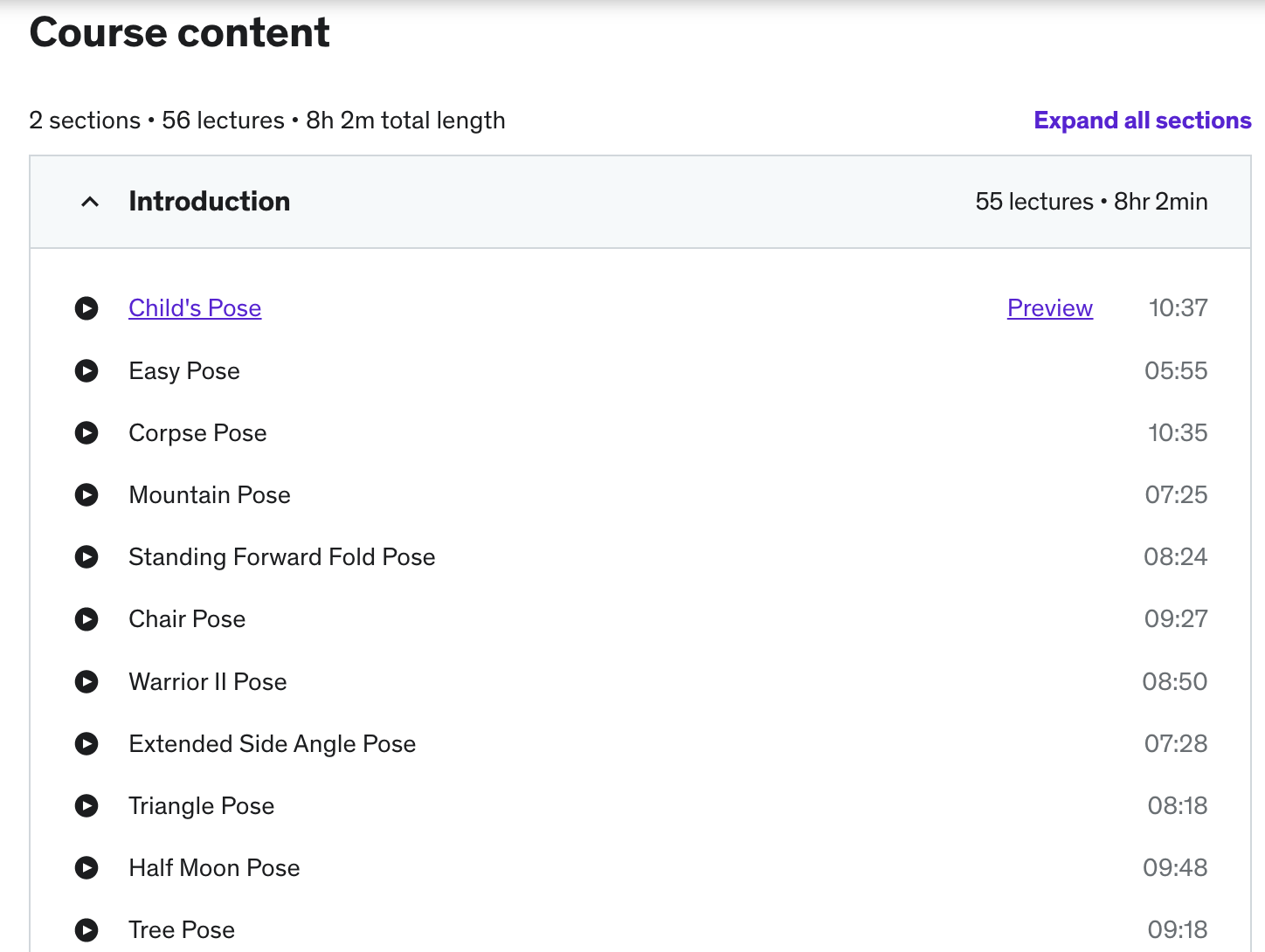
D. Evaluate the levels of competition
Because the primary aim of a material pillar is to rank for the main subject, you can seem at the current leading-rating pages to see what they are masking.
For case in point, the best-rating website page for “yoga poses” has now coated the crucial poses for beginners:
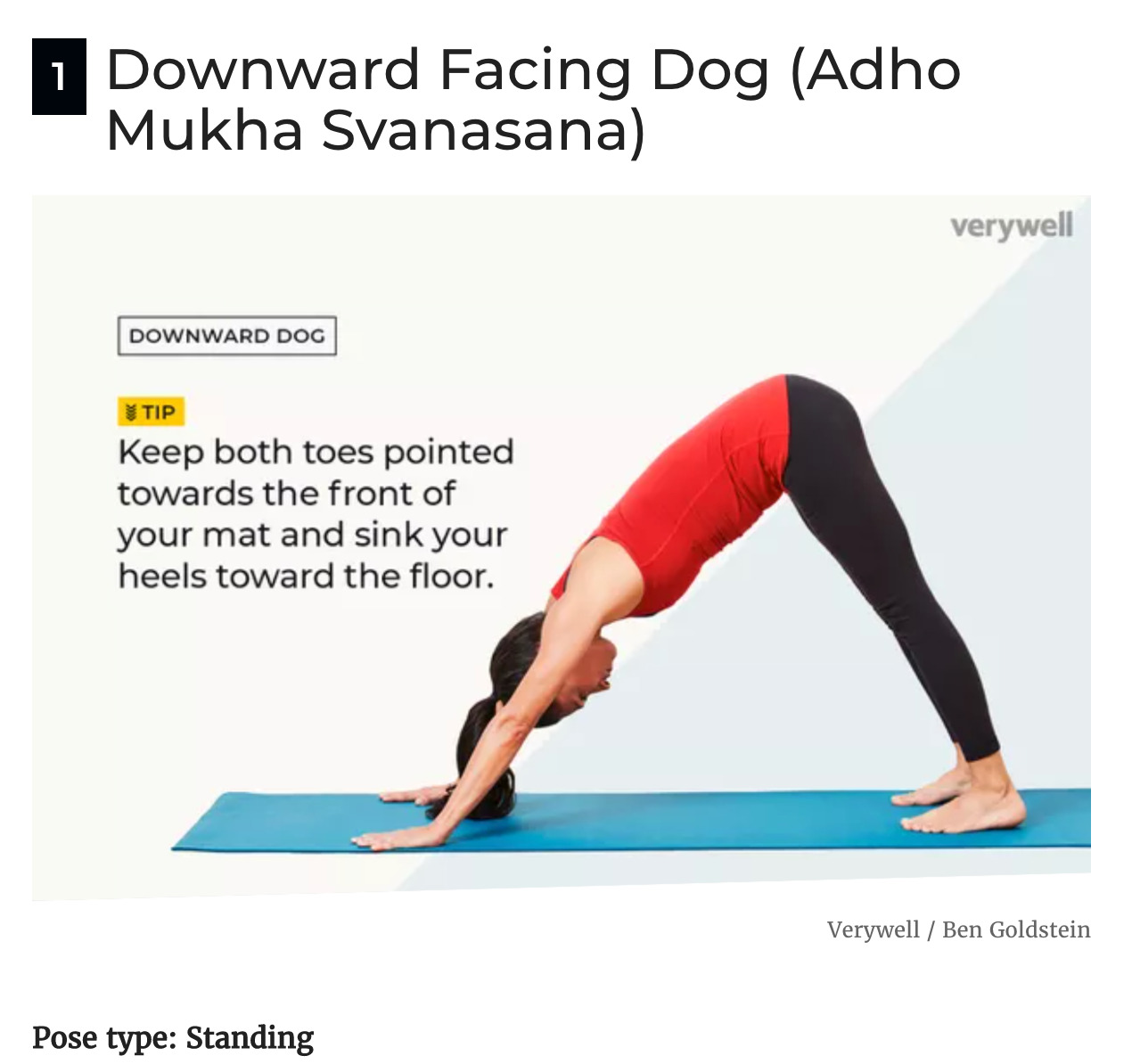
Considering the fact that the subtopics are organized neatly in a hierarchical manner—H2s, H3s, H4s, etc.,—a great way to see all of them at one glance is to install Ahrefs’ Search engine optimization Toolbar and open the Articles report.

Sidenote.
This is merely analysis for your content pillar. You want to make absolutely sure you are not lacking out on significant subtopics. But you’re not making an attempt to squeeze in each individual subtopic both. Use your abilities and flavor to determine out what you must involve on your pillar web page.
3. Generate your content pillar
With your research done, it’s time to make your information pillar.
Feel of it as a “portal.” Your aim is to give audience a bounce-off stage for even more discovery of the subject. So continue to keep it somewhat light.
You’re not seeking to say every thing about every subtopic. Depart it to your cluster internet pages to present a lot more depth. Stick to what individuals need to know.
For instance, our beginner’s guidebook to Web optimization only has a one particular-sentence introduction to just about every chapter:

If you have the finances, look at producing a customized layout for your material pillar. This is what we did for our individual. Not only does a good design make it easier for viewers to consume content material, but it also stands out among the other guides—hopefully main to much more shares, one-way links, and traffic.
But if you just can’t manage a customized structure now, really don’t stress. You really don’t will need an unbelievable style to make handy content material pillars. Consider a glimpse at Zapier’s pillar page about remote get the job done—it’s mainly textual content:

4. Build your cluster internet pages
Even while a written content pillar is a stand-alone webpage, it’s almost worthless with out its supporting cluster web pages. So when you are accomplished with the key pillar page, it’s time to develop the rest of the hub.
With the subtopics laid out, you previously know what you need to have to produce. It is simply a matter of executing. But it will take time.
Watch this video to study how to produce information for your cluster pages:
If you have present content parts that match the “hub,” then just interlink them collectively.
5. Market your content material pillar
Really do not hold out for the information pillar to be discovered—promote it proactively and enable individuals know.
Listed here are a couple of techniques you can use:
- Share it with your audience – Email list, social media accounts, and so forth. Share it anywhere you have a adhering to.
- Get it integrated in newsletters – There ought to be quite a few newsletters committed to curating the greatest content in your market. Locate the e-mails of these e-newsletter writers and pitch your content pillar for inclusion.
- Share it on communities – If you are an energetic member of any communities—Facebook teams, Slack, Discord, Reddit, forums—share your information pillar with them.
- Make backlinks – Inbound links are an important Google rating element. So if you want your information pillar to rank significant, you’ll have to have to build backlinks. Examine this start off-to-end information on how to establish hyperlinks to your pillar site.
Encouraged studying: 13 Articles Marketing Strategies to Get Extra Eyeballs on Your Articles
Content material pillar examples
Check out out these effective written content pillars to inspire your own:
You can discover extra pillar page illustrations in this article.
Understand more
If you are on the lookout for much more guides on how to generate articles pillars, I’d advise checking out these content:
Any concerns or comments? Allow me know on Twitter.
[ad_2]
Source link









